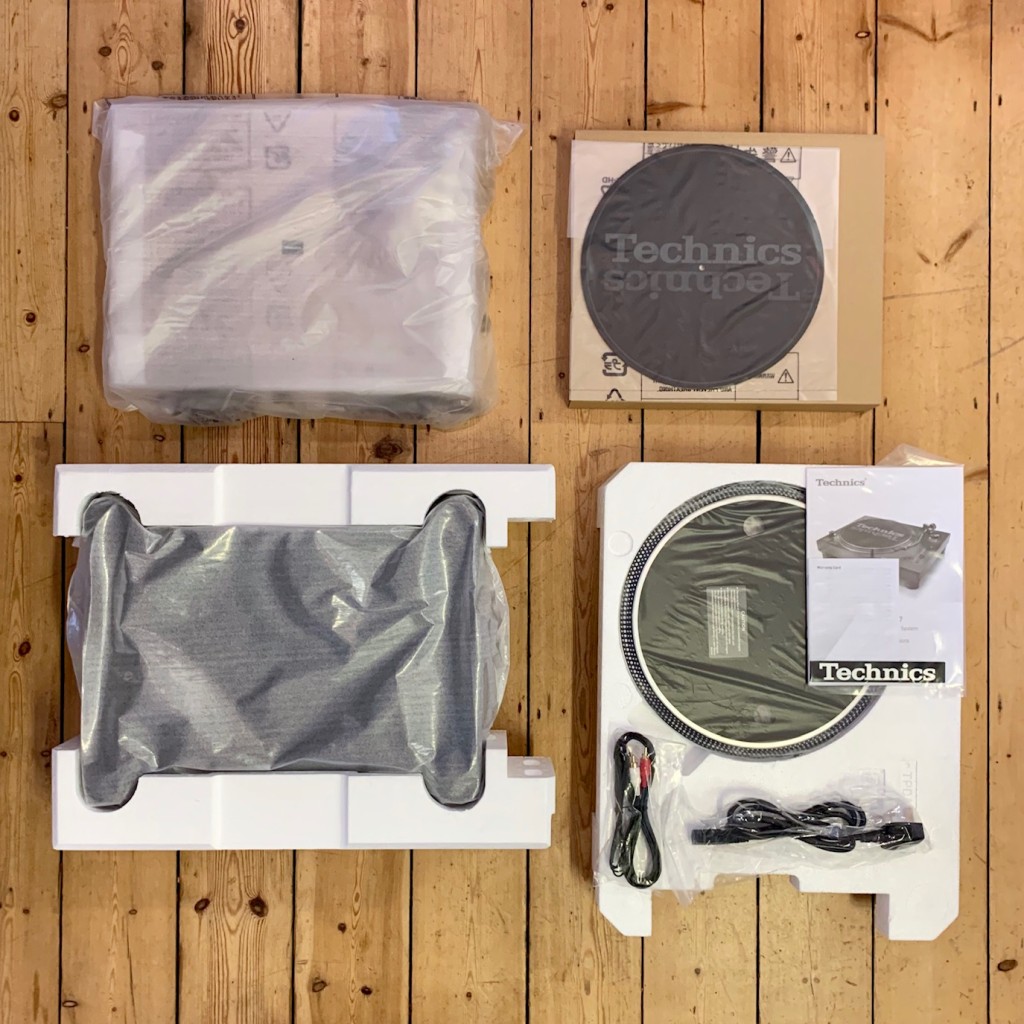The latest incarnation of Technics’s classic turntable is now available in DJ-friendly spec.

This wasn’t supposed to happen. The SL-1200 was never even meant to be a DJ turntable.
The original, released in 1972, was a mid-range model in the extensive Technics hi-fi range. More by luck than judgment, the 1200 just happened to have pretty much exactly the right characteristics to make it the weapon of choice for the emerging breed of disco and hip-hop DJs: sturdy construction and good sound at a reasonable price. The 1200s cemented their position as a de facto industry standard, remaining the clear favourite option for vinyl DJs to this day.
The original MK1 model is noticeably different, but after the introduction of the pitch fader with the MK2 model in 1979, the SL-1200/1210 remained relatively unchanged until they were discontinued in 2010. There were small upgrades here and there, but if you line an early MK2 up against a later unit, they look, feel and sound incredibly similar, a testament to the fact Technics got things just right in the first place (the MK2 itself remained in production as the base model in the range from 1978 through to 2010).

Technics’s parent company Panasonic sold 3.5 million SL-1200s and SL-1210s between 1972 and 2010, but by the end of that period the tooling used to manufacture the components was reportedly worn out and reaching the end of its serviceable life, forcing the company to cease production. It’s unclear whether Panasonic always planned to return or were surprised by the outcry over their original decision, but a move was eventually made to design a new version of the turntable, build new tooling and recommence production.
As such, the company have taken the opportunity to redevelop almost every element of the 1210, meaning that the MK7 is in a strange way an entirely new product that looks almost exactly the same as the older models. Removing the new MK7 from its box, the dimensions and overall approach are nearly identical to the older models, but there are changes. The MK7’s sharper-edged shape and more modern materials give it a clean contemporary look, while the redesigned buttons, pitch fader and pop-up cueing light all feel subtly different but not necessarily better or worse. There’s also a new x2 pitch button to double the pitch fader’s range from ±8% to ±16%. A standard IEC ‘kettle lead’ power socket, RCA audio sockets and screw terminal earth connection avoid the hassle of replacing or upgrading cables on previous models. The dust cover is no longer hinged, but simply rests on top of the unit.

When the 1200 returned in 2016, there was some confusion over pricing and whether it was still a DJ turntable. The SL-1200 was always part of a comprehensive turntable range, most of which was aimed at home listeners and hi-fi aficionados. The new line-up follows suit, with the limited edition GAE model, the general release SL-1210G and the slightly more basic GR. Despite the inclusion of a pitch control, these are all mainly intended for use as hi-fi turntables. The DJ-focussed version of the model shown here is known earns the MK7 suffix, while there are also some more hi-fi models on the way, including a stripped-down SL-1500 (no pitch control) and high-end SL-1000R (a snip at just under £14k).
Lined up alongside one of my own trusty MK2s, the MK7 immediately looks like part of the same family, but there are some crucial differences to the construction and technology inside. The MK7 is noticeably lighter than the older models, weighing in at around 7.6 kg (between 3 and 4 kg lighter). That weight difference comes despite the fact the revised platter and magnet assembly weighs in at 1.71 kg, as compared to 1.47 kg for the equivalent MK2 component. As a rule of thumb, heavier platters tend to improve speed stability while also reducing resonance. The reduction in overall weight is explained in part by the use of a new glass-plastic composite material for the chassis and a new coreless motor derived from the technology used in Blu-ray drives.

The physics of platter, chassis and motor design are a complex business, but what matters most is that the turntable feels and sounds at least as good as the older models which have become such a clear industry standard. Cueing up a record on the MK7, it’s immediately reassuring. The new motor is responsive and stable, giving a very familiar feel when beatmatching.
Sonically, it’s also very very similar to the older models. Comparing side by side with the same records and cartridges as my MK2, there’s very little in it, with the same solid, no-nonsense presentation we’ve come to know from older Technics decks. The torque and wow/flutter specifications of the MK7 are slightly inferior to the Grand Class models, but there’s still 20% more starting torque than the older models and the specs match in all other areas. Mixing feels very similar, while the sound is absolutely what you’d expect from a modern Technics deck. In use, the MK7 stands up as a worthy successor to the 1200/1210 lineage.

If you want sturdy build quality, rock solid performance, decent sonics and class-defining reliability, the MK7 ticks every box. You can buy better-sounding hi-fi turntables, more feature-rich scratch decks and even digital alternatives, but nothing matches the all-round capability of the SL-1210.
With the release of the MK7, the SL-1210 remains the definitive DJ turntable. Even if it was never really meant to be.
More info/buy
Greg Scarth



